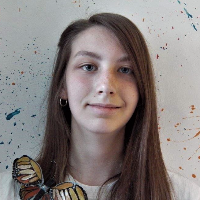Lilo And Stitch Is Criminally Underrated And Here’s Why
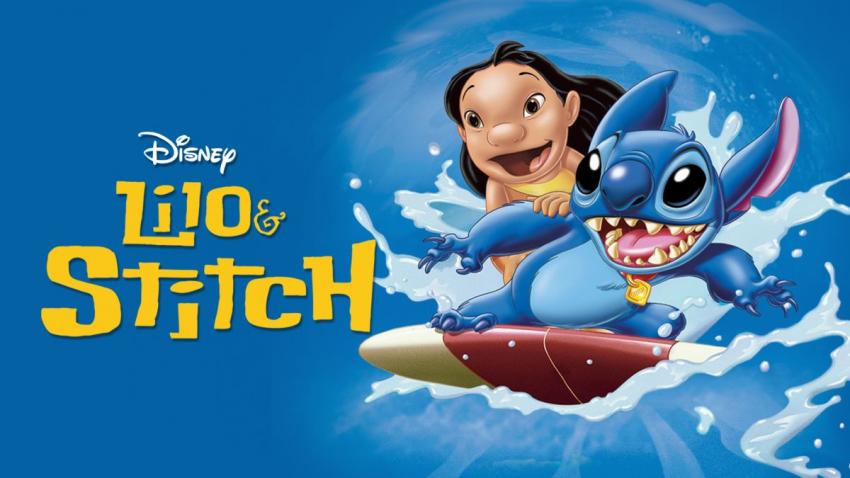
Lilo and Stitch is a 2D animated Disney film released in 2002. It follows the escapades of rogue experiment 626 who frees himself from the confines of the Galactic Federation and manages to escape to a planet called Earth. He crash lands on the island of Hawaii, and in order to evade capture he disguises himself as the new dog of a little girl called Lilo.
Lilo is being raised by her sister Nani, and due to her unique family situation and awkward behaviour she is a social outcast desperate for a friend. She sees the good in experiment 626, whom she names Stitch, and attempts to make him an upstanding member of society. All the while, she is unaware that Stitch is actually an alien using her as protection to evade capture.
The Alien Society and Technology Is Well Established
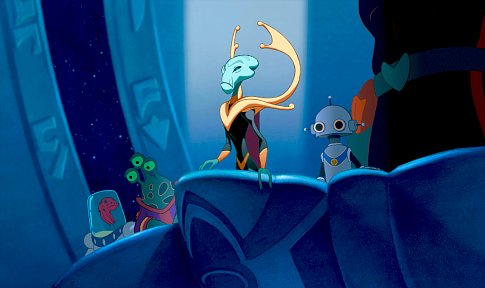
Because the majority of the film takes place in Hawaii, you might forget that the first 10 minutes of Lilo and Stitch actually takes place in space! And let me tell you, Disney manages to pack a lot into those 10 minutes. The film opens with the trial of the mad scientist Jumba, held before the council of the Galactic Federation.
This not only shows that the aliens in this film are intelligent, but that they have an established democratic society complete with a judicial system and defence corporation. The council is also shown to be reasonable as they do not immediately sentence experiment 626 to death, despite being the product of illegal experimentation. They first give him a chance to defend himself and show that he is good (I can’t say humans in other films offer aliens the same curtesy; it’s usually shoot first, ask questions later).
This also introduces one of the questions and themes that is explored in the film: whether something that is inherently evil can be taught to be good, and if it can, was it inherently evil in the first place?
The space sequences also showcase the technological advancements the aliens have made compared to humans, making it more believable that a creature like experiment 626 could actually be created. When he is imprisoned, a sample of experiment 626’s DNA is taken and loaded into some guns which then aim directly at him; this shows that the aliens have guns that can lock on to the genetic makeup of a single target.
This seems highly sophisticated but the flaws in the weapons are immediately pointed out as experiment 626 works out how to escape. 626 realises that the guns aren’t accurate enough to know what is his him and what is just his DNA and exploits this flaw in order to release himself.
This is all shown in about a minute and in a way that is easy for children to understand, even if they haven’t learnt about DNA yet. The technology having flaws not only makes the alien world seem more realistic, but also establishes that 626 isn’t just a mindless aggressive beast, but an intelligent being who doesn’t only rely on his physical abilities.
However, 626 isn’t perfect either. As he is on his way to Earth it is made clear that his molecular density is too great to survive being in water, setting up later narrative plot points early on. The exposition lets the audience know everything they need without the information seeming like it’s shoved into the story; the script ensures that it comes up naturally and in a way that is relevant.
Establishing the alien world so well is perfect because it sets it up as a foil to the Hawaiian setting that viewers are then introduced to. For audiences who might not know much about the island, Hawaii could appear quite ‘alien’ in itself, but because you are introduced to the completely unknown alien society first Hawaii is normal by comparison.
Plus, going from the relatively monotone alien world full of blacks, greys, and cold colours to the Hawaiian setting is even more dazzling and beautiful to look at, so you fall in love with it immediately.
It Deals With Real World Struggles
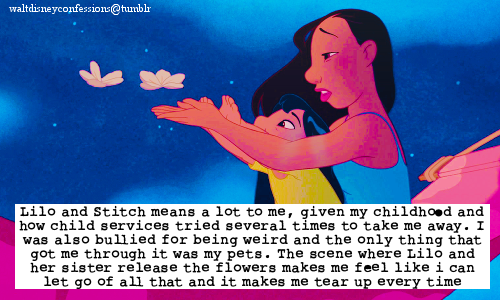
Continuing with the idea of being ‘alien,’ Lilo And Stitch also deals with bullying through Lilo’s character, who is bullied by the other girls in her class for being different. Lilo is presented as different from the other children from the get-go with her belief that a fish called Pudge controls the weather and her homemade doll (which looks like an alien itself) whose head is swollen because bugs laid eggs in it.
Lilo’s wide imagination is not accepted by the other children who exclude her from their activities. This shows how children who do not fit into the usual social dynamic struggle to gain acceptance from their peers. It also becomes apparent that it is not just her personality that makes Lilo an outcast; she is also no longer part of a ‘normal’ family with a mum and a dad because they died in a storm.
When children come across something that is different from what they’re used to or something they don’t understand, they can become callous and mean or make fun of it, simply because they don’t know what else to do. This is pointed out when Lilo tells her sister Nani that ‘people treat me different,’ and Nani explains that ‘they just don’t know what to say.’
Lilo’s trouble being accepted and the bullying from the other girls result in her lashing out, letting out her frustrations in bursts of violent behaviour. The film does a good job of explaining and empathising with Lilo’s actions whilst making sure not to praise them, so children won’t copy her behaviour. It also highlights how Lilo inadvertently makes trouble for her sister Nani.
Because of their situation, Nani has had to step up to become Lilo’s guardian and must prove to a social worker that she is able to provide a suitable environment for Lilo to live in and support them both financially. Unfortunately, the day the social worker comes is also the day Lilo has been bullied and she refuses to cooperate with Nani, not considering the repercussions her attitude could have. As a result, Nani is given an ultimatum, either she meets the social worker’s demands or Lilo will be taken by social services.
While many Disney protagonists are orphans, few Disney films ground their characters in reality like this where the characters can’t rely on magic or fantasy technology to help solve their problems (Aladdin had Genie, Cinderella had her fairy godmother, etc.). Yet again, the social worker is written with care, so although he seems like the ‘bad guy’ to Nani and Lilo, he is still presented as sympathetic to the audience and clearly looking out for Lilo’s wellbeing.
Lilo’s wellbeing is her sister Nani’s responsibility, but Nani is barely more than a kid herself. At only nineteen she has suddenly become a parent to a seven-year-old and is struggling to find a balance between her new role as Lilo’s guardian and her role as Lilo’s sister.
This is seen when the social worker leaves and Nani immediately switches back to ‘sister mode’ chasing Lilo around the house to confront her about her behaviour in front of the social worker. This role switching is shown again later after she has had a heart to heart with Lilo, when she teases Lilo by refusing to leave her room so Lilo can wish on a falling star. Nani’s inconsistent role is not only hard for her but for Lilo too, who says she likes Nani ‘better as a sister than as a mom.’
An Unconventional Family Is Showcased
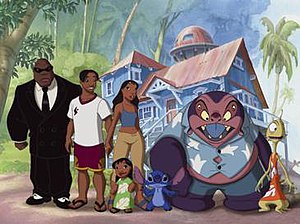
A family made up of two orphaned sisters might not sound original now, (what with Frozen having come out) but in 2002 such an unorthodox family hadn’t been featured in a Disney film (at least to my knowledge). Sure you had orphans (many, many orphans) who were raised by unusual parents, from fairies, to wolves, to gorillas, etc., but they always had some form of parental figure. Lilo And Stitch shows that you don’t have to have a parent to be a family.
It also emphasises that family doesn’t have to be blood, as Lilo and Nani adopt Stitch and make him a part of their family. Jumba, Stitch’s original ‘family,’ is not healthy for him and doesn’t appreciate him for who he is; once he is with Lilo he is able to learn more about himself. Stitch is able to sum it up at the end of the film when he accepts Lilo and Nani as his family saying, ‘this is my family…it’s little…and broken, but still good.’ Stitch’s acknowledgement that his new-found family has flaws also sends a great message as it stresses that no family is perfect.
One of the great things about Lilo And Stitch is that it doesn’t shy away from showing every side of Nani and Lilo as a family, the good, the bad, and the ugly. Lilo is not an angelic child, she is selfish, demanding, and has tantrums. Some viewers criticise Lilo because they find her annoying, but what seven-year-old isn’t? In my opinion, Lilo is one of the most accurate children portrayed in a Disney animation.
Lilo is also caring, passionate, and full of love. She never gives up on Stitch even when she is upset with him and admits when she is wrong, apologising for hitting (and biting) another girl in her class. More than anything, Lilo just wants to be accepted and have friends.
Nani is also not without her faults. Nani is at her wit’s end, finding it difficult to keep a job while looking after Lilo and dealing with the ways she acts out. Because of this, Nani is stressed, frustrated, and angry, and she sometimes takes out her feelings on Lilo by yelling at her.
However, Nani is kind, hardworking, and always puts Lilo first. A story with characters whose shortcomings are at the forefront is much more relatable than a story with characters who are practically perfect in every way, and part of why I think Lilo And Stitch is such a great film.
It Explores Interesting Themes
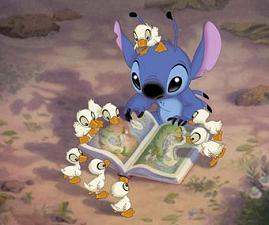
As previously mentioned, two of the biggest themes in Lilo And Stitch are the notion of being ‘alien’ or an outcast and not fitting in anywhere, and family. Not only does Lilo And Stitch validate families who might be classed as ‘unconventional’ or ‘unorthodox,’ it also explores having loyalty to your family and supporting them through hard times. Of course, this is all accumulated in the Hawaiian word ‘Ohana’ and the most quotable phrase from the film ‘Ohana means family, family means no one gets left behind or forgotten.’
As well as looking at families, Lilo And Stitch focuses on children specifically, and their unique perspective of the world. Particularly the way children see the world compared to adults. While all the adults in the film are afraid or disgusted by Stitch when they first meet him, with Nani physically dragging Lilo away from him and asking ‘what is that thing?!’ Lilo is instead drawn to him. Lilo appears to see something in Stitch that no one, including his creator Jumba, can see.
This is highlighted by one of the first things she says about him: ‘he’s good, I can tell,’ which directly contrasts everything we as the audience have been told about Stitch so far. Stitch is presented as an unfeeling destructive force created to break everything he comes into contact with. While Lilo acknowledges this, drawing up a chart to illustrate how much of Stitch is bad, unlike everyone else she has hope that he can become a better person.
This suggests that children have a deeper insight into people and the world than everyone else and shows that children shouldn’t be underestimated. Maybe Pudge the fish really does control the weather. Lilo’s insight could also be implied by her love of taking pictures of overweight tourists.
While many people view being overweight as unattractive due to that fact that it can be unhealthy, Lilo hasn’t been exposed to any of that logic yet and simply sees them as beautiful. Therefore another theme Lilo And Stitch explores could be the corruption vs preservation of innocence.
One of the main themes looked at during the first half of the film is purpose, and what would happen if you’re unable to fulfil your purpose or your purpose is lost. Stitch’s instincts are designed to lead him to cities where he can cause the most destruction. On Hawaii Stitch is unable to fulfil this need to destroy and he is unable to escape the island due to his high density and fear of water.
Stitch has to start his life from scratch, and for the first time think about what he truly wants. In many ways, Stitch’s story arc is like a coming-of-age story where he rebels against his parents and has to survive on his own for the first time, discovering more about himself as a person as a consequence. Luckily, he has Lilo to help him.
The Stakes Are High
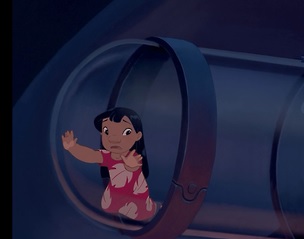
There are various different stakes in Lilo And Stitch, and each one comes with great risk to certain characters. The most obvious is the need for Stitch to avoid being captured by Jumba. If Stitch is caught, not only will he be taken away from Lilo and Nani, the family he is just forming, but he will be executed by order of the Galactic Federation. He is literally in a life-or-death situation.
Although Stitch generally gets the best of his pursuers and Jumba and Pleakley often end up as the butt of a joke, the fact that they are always there hidden in the bushes or in the waves keeps tensions high. It shows that they could attack anytime from anywhere, so Stitch can’t afford to relax. The one time he does let himself go and enjoys some surfing with Lilo and Nani they go after him, and Stitch nearly drowns.
Aside from Jumba and Pleakley, one of the other antagonists in the film is the social worker Mr Bubbles who threatens to take Lilo away from Nani unless she can find a job. To make matters worse, he only gives her three days to find one. Every time Nani comes close to being hired, Stitch accidentally messes everything up and she’s back at square one, with time quickly running out.
Just when all hope seems to be lost and it looks like Lilo and Nani will be separated, David appears at the last second with a job opportunity for Nani, making the audience think everything may work out. Unfortunately, this is when Captain Gantu arrives determined to catch Stitch once and for all, destroying Lilo and Nani’s house in the process. This, of course, does not look good to the social worker. So, after raising our hopes it looks like Lilo will be taken away after all.
Lilo does get taken away, but not in the way you would expect. As the final climax of the film arrives, Lilo is kidnapped by Captain Gantu and Stitch is captured by Jumba and Pleakley before he can rescue her. Nani is beside herself; her little sister is about to be taken into space and no one is helping her! Luckily, Stitch is able to persuade Jumba to release him so he can rescue Lilo.
What follows is an action-packed aerial battle, that is not only tense but also shows how far Stitch has come. After defeating Gantu, rather than leaving him to die, Stitch carefully transports him to the ground earning him a ‘good dog’ from Lilo.
The Humour Appeals To Children And Adults
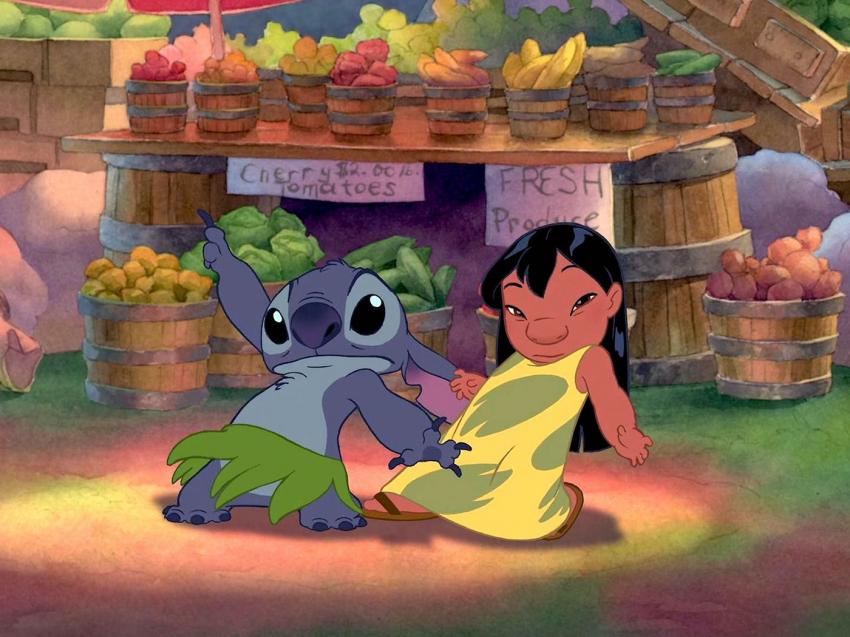
One of the last aspects that’s so great about Lilo And Stitch is that it’s a true family film, not just a kids film, with humour that is entertaining to both children watching and their parents or guardians. Of course, it is full of slapstick humour and visual jokes that children can enjoy, such as Jumba and Stitch passing a gun that is about to explode back and forth like a hot potato, but the film also contains subtler humour.
The beginning of the film introduces the idea that the Earth is a protected planet, but not because of the value or potential of human life, no. It is because the Earth is home to the ‘endangered’ mosquito population and humans are their source of nutrition.
The idea that aliens think mosquitoes are endangered is amusing in itself, as is Pleakley’s obsession with them, but what’s better is the payoff at the end of the film when it is revealed that it was humans who actually convinced the Galactic Federation that mosquitoes were endangered in the first place.
There are little quirks throughout the film, like the implication that Mr Bubbles, the social worker, used to be a gangster or hitman. He has a tough and intimidating image that juxtaposes what audiences would imagine a social worker to look like.
He refuses to listen to any of Nani’s excuses and is shown to be very strict, yet when questioned by Lilo about his background he becomes nervous and tries to evade the questions. There are many more examples of this kind of discordant humour throughout Lilo And Stitch making it a fun watch for the whole family.
There are many more reasons why Lilo And Stitch is underrated, but rather than list anymore, I would just advise you to give it a chance. Or if you’ve already watched it, watch it again with a more open mind, there are probably many great things you missed when you watched it the first time.
